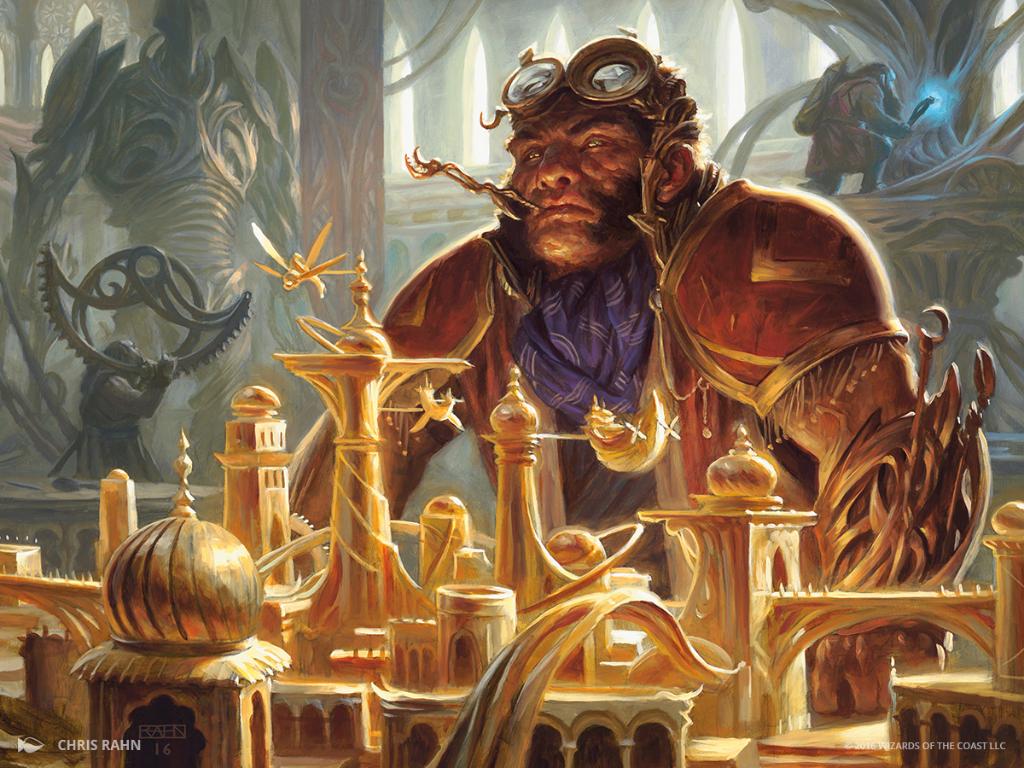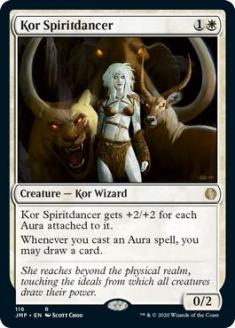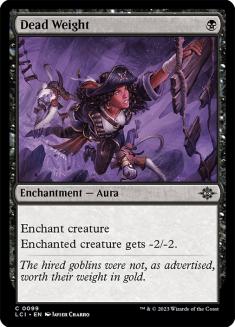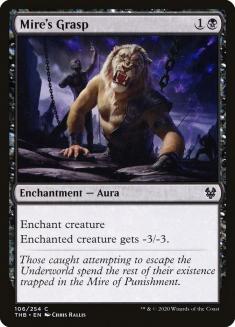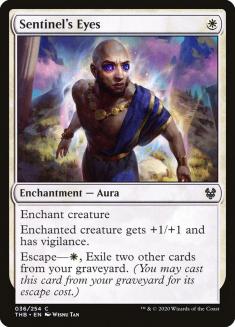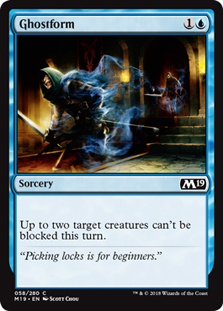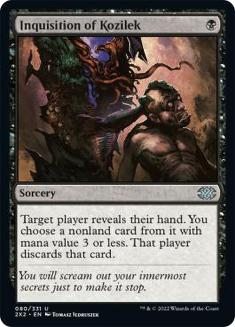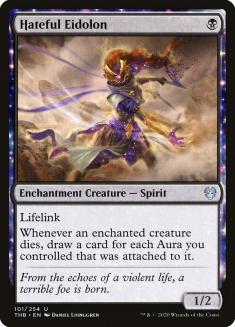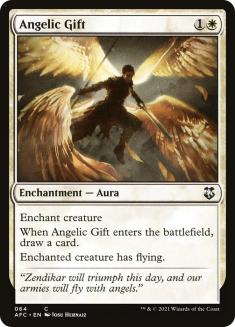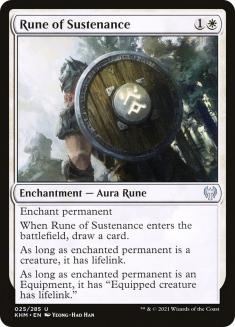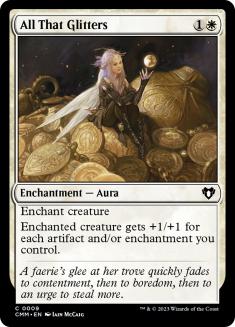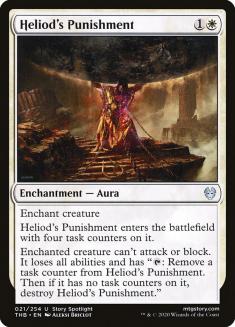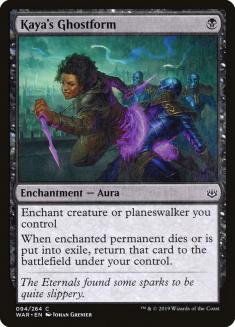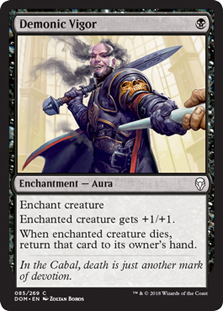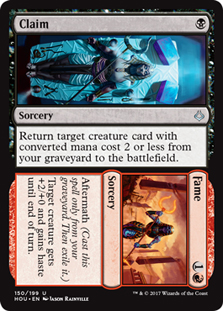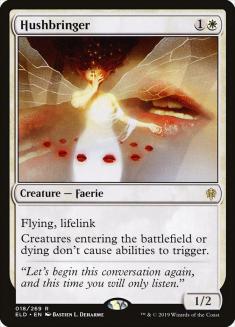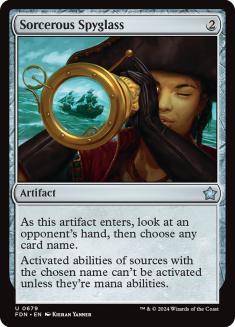For a long time, Kor Spiritdancer decks occupied a weird spot in the Historic metagame. They were strong against the wide field, but weak versus the most popular deck. First it was Sultai Midrange, with its Thoughtseizes and Fatal Pushes, and then Jund Company with Priest of Forgotten Gods, Claim the Firstborn, and Mayhem Devil. This relegated the deck to Tier 2 or 3. I honestly never really considered it a viable deck for me to play.
With Arne Huschenbeth’s win with Orzhov Auras (Lurrus) at the Kaldheim Championship, everything changed. The deck went from being just a ladder deck to a viable contender in my mind. I believe this was for three main reasons:
- Their version of the deck was better versus Jund than I expected. They had more removal than normal and that made a big difference. I didn’t think the deck had a good matchup versus Jund all of a sudden, but I had been operating under the misconception that it was dreadful, and it was certainly not dreadful.
- The contents of most Jund decks changed. The Jund Company builds were strong against Orzhov Auras, but many of the Jund Food decks had no Priest of Forgotten Gods, for example, and some didn’t even have Claim the Firstborn. Jund Food ended up being the most popular version in the tournament by a lot, a boon for Orzhov Auras.
- I lost my bias against it. Seeing it win the tournament (and not only win the tournament but have a very high win rate) made me actually pick the deck up and play with it, which I had not done previously because I just beat it whenever I played against it on ladder. I do not traditionally like this style of deck, so I avoided it, but it had enough pedigree now that I felt I had to test it, and it surprised me during the games.
So, after testing the deck for a while, I decided to play it in the last MPL split. This is the version I played:
Creatures (8)
Lands (16)
Spells (36)

Shortly after that, Strixhaven entered the metagame, and brought with it the Mystical Archive cards. Orzhov Auras took a back seat to shiny new Brainstorm, Faithless Looting, Time Warp, and Mizzix’s Mastery decks. However, once the format settled, Orzhov Auras showed it could remain a contender. Here’s the list Simon Degeé went 10-1 with in the SCG Tour Online’s Strixhaven Championship Qualifier #8:
Creatures (8)
Lands (17)
Spells (35)
- 2 Plains
- 4 Thoughtseize
- 2 Inquisition of Kozilek
- 1 Dead Weight
- 3 Angelic Gift
- 4 Cartouche of Solidarity
- 2 Claim
- 2 Demonic Vigor
- 4 Kaya's Ghostform
- 4 Sentinel's Eyes
- 2 Heliod's Punishment
- 2 Sejiri Shelter
- 1 Agadeem's Awakening
- 2 Rune of Sustenance
Sideboard

All in all, this deck is pretty straightforward to play. Your aim is to clear the way with discard spells, resolve an “Enchantress,” start drawing cards, and eventually kill them. Once you get your engine going, you’re very hard to stop. You’ll draw more disruption spells and more resiliency in the form of Ghostforms and reanimation spells.
You’re not actually in a big rush to kill people with this deck most of the time. It’ll happen when it happens. Lurrus of the Dream-Den means this deck is a lot more resilient than it appears at first. This is one of the best Lurrus decks out there, because you can protect it with the Auras as well. Casting a Lurrus and immediately attaching Ghostform to it is a very common sequence.
The most important piece of advice I can give you when it comes to this deck is to basically never keep a hand without a two-mana creature, because if you don’t have one, then none of your cards do anything.
I’ve written before about how I classify decks as “quantity decks” or “quality decks” when analysing mulligan decisions. Orzhov Auras is as much of a “quality” deck as they come. Your best cards (Kor Spiritdancer and Sram, Senior Edificer) are so much better than the rest of your deck that it doesn’t make sense to keep a hand without them. These cards enhance the rest of your deck so much that a five-card hand with Kor Spiritdancer is worth much more than a seven-card hand without it. You will quickly recoup these two cards and then some. Once you get your engine going, your opening hand count no longer matters.
Take, for example, this hand versus a Gruul deck on the play:
This hand is basically perfect except it doesn’t have a creature. I would not keep it on seven cards, as your odds of drawing one of the two creatures by Turn 4 is only 40%. Turn 4 might not even be good enough, especially if it’s Sram, Senior Edificer or you don’t have a third land. It’s much better to mulligan into a hand that has Kor Spiritdancer, lands, and Auras or Thoughtseize.
Basically, don’t be afraid to mulligan. This deck mulligans really well and you will win games on five or even four cards. But they have to be the right ones. Keeping a bad hand is simply unacceptable with Orzhov Auras.
The one exception to “your hand must have a two-drop” creature is if you play Hateful Eidolon. Then I can see keeping a hand with Eidolon and, for example, two removal spells versus specifically a creature deck. But since I don’t play that card, it doesn’t apply. Most of the time you should not keep a hand where Eidolon is your only creature even if you play it. Curving Hateful Eidolon into a bunch of Auras is not going to beat anybody.
Now, let’s talk individual choices:
At the MPL split, we played two copies of Duress in the maindeck. Now, we can upgrade them to Inquisition of Kozilek. It’s not a strict upgrade, since there are matchups in which you want to take an expensive card (such as Teferi, Time Raveler or Commit // Memory), but I think it’s definitely an upgrade overall – just the ability to get rid of Bonecrusher Giant and to a lesser extent Brazen Borrower is already quite good, and then it’s going to be much better in the Orzhov Auras mirror. Against Gruul, for example, you couldn’t justify having Duress for their Magma Sprays because it didn’t hit Bonecrusher Giant, but Inquisition is perfectly serviceable because the worst-case scenario is just taking their two-drop.
As mentioned before, I am really not a fan of Hateful Eidolon. I was happy when I saw that Simon did not play any. There are certainly spots in which it can be good, but most of the time, if you get your engine going, then you draw enough cards and produce enough hard-to-kill creatures that the benefit either doesn’t come up or is redundant, and drawing a card while you kill something with Dead Weight is really not good enough.
I would be happier if I felt like this was a good creature to carry your Auras. I don’t think you can keep most hands where this is the only creature. That’s why I don’t like it enough to include in my deck.
The choice between these two cards boils down to what you believe you will face. Angelic Gift is simply a necessity to push through Cauldron Familiar. It’s also very good against Goblins and Nissa, Who Shakes the World decks. Rune of Sustenance, on the other hand, is better against decks like Gruul or Selesnya, where gaining a lot of life essentially means you win the game. I think that right now a mix is probably appropriate. Remember that you can cast Rune of Sustenance on a land if you need to.
Simon decided not to play All That Glitters at all. I can respect that, particularly without Hateful Eidolon. If you have Kor Spiritdancer, then All That Glitters is sort of redundant. With Sram, Senior Edificer, however, All That Glitters is the card that turns it into a real threat. Having a 4/4 or 5/5 with first strike, vigilance, and lifelink might be enough against some decks, but against others you really just need to kill them. I would like to have at least one All That Glitters in my deck, at least to have something to dig for in spots like this (even more so in events with open decklists).
Dead Weight is the most efficient removal spell, and the best versus small creatures. Costing one mana instead of two mana is huge against decks like Gruul or Mono-Red Aggro. However, it doesn’t kill Mayhem Devil, which is pretty annoying. When you’re dealing with something that’s just a pile of stats (such as Gruul Spellbreaker), then shrinking it can get some of the job done, but Mayhem Devil in particular is one you often need to kill. If Mayhem Devil remains as unpopular as it’s been, however, there’s no need for Mire’s Grasp, because even Dreadhorde Arcanist you can do a good job of answering with Dead Weight.
Heliod’s Punishment is a bit different, because it’s by far the worst for dealing with a small creature (since the creature can come back and also it doesn’t immediately go to the graveyard for Lurrus recursion), but it’s the only one that will deal with certain problematic cards, namely Korvold, Fae-Cursed King and Kor Spiritdancer in the mirror. Because Kor Spiritdancer’s ability works with opposing Auras, putting a Dead Weight on it accomplishes nothing, so you need to have Heliod’s Punishment to deal with it. Again, this is a metagame choice, but I lean towards not having a whole lot of removal spells in my deck right now.
Kaya’s Ghostform is just a much better card than Demonic Vigor. It returns the card directly to the battlefield and it works on exile effects as well. The +1/+1 is negligible, so the only thing that’s really compelling about Demonic Vigor is the fact that it doesn’t fall off when they Claim the Firstborn it. Still, going back to your hand is enough worse than going back to the battlefield that I don’t think you can justify playing a single Demonic Vigor over a single Kaya’s Ghostform (but you can play it if you want more of that effect).
So, what does my list look like right now?
Creatures (9)
Lands (16)
Spells (36)

Sideboarding
VS Gruul Aggro
Gruul Aggro is a good matchup, and it gets better with the new additions, Inquisition of Kozilek nails Bonecrusher Giant and Ahn-Crop Crasher, and Rune of Sustenance means it’s very hard to race you. You’d rather have more removal in your deck in this matchup, but you don’t truly need it.
Out:
In:
After sideboarding things get worse, but not much worse. Most of the removal I’ve seen people bring is exile-based, so Claim // Fame doesn’t work, but if they happen to have a lot of non-exiling removal spells you can keep it. Putting one or two Auras on a creature brings it out of Gruul’s removal range, so I’m fine taking out a Kaya’s Ghostform.
VS Dimir Tainted Pact
I think this matchup is about even. The combination of a fast combo kill plus all the control elements means there’s a lot for you to worry about, but the Auras deck does a pretty good job of drawing disruption spells, so amassing the combo isn’t very easy to begin with.
Out:
In:
After sideboarding you bring in some more disruption, which is good. Hushbringer stops their combo, so sometimes it pays to put Ghostform on it and try to “hate-bear” them out of the game. These Tainted Pact decks usually can’t kill any other way (though they do have plenty of removal, so be careful about relying too much on it).
VS Jeskai Control
Having Inquisition of Kozilek over Duress really hurts here, as the most likely cards you want to get rid of are Teferi, Hero of Dominaria (it bypassing Ghostform is very annoying) and Wrath of God. Brainstorm being able to hide their key cards from you is also not great. The upside is that these decks nowadays don’t play Grafdigger’s Cage because of Torrential Gearhulk (this is the reason I’m not playing Fragmentize anymore), so all your recursion is on. I think overall you are favored.
Out:
In:
After sideboarding, it really depends on what they have. They could have stuff like Baffling End, in which case they would improve over you. If all they have is just more red-based removal spells, then I think you’re fine.
VS Rakdos Arcanist
This is your worst matchup. They have lots of disruption and removal spells that don’t care about your creatures’ toughness, plus a relatively fast clock. There honestly isn’t much you can do other than hope you have a great hand and they have a poor one.
Out:
In:
I find that the best plan is to sideboard minimally and just hope you get there.
VS Selesnya Company
The most important card in this matchup is Archon of Emeria. It basically stops you from executing your gameplan and it dodges Dead Weight. (You’ll need Mire’s Grasp if this matchup becomes more popular.) You can still win if Archon is on the battlefield for a while, but it’s very annoying. Past that, they have Skyclave Apparition as their disruption spell but not much else to stop your engine.
Out:
In:
Dead Weight is a bit awkward versus them, but people have enough Thalia, Guardian of Thraben in their sideboards that I think it’s worth having some in your deck (plus it can get Luminarch Aspirant and LLanowar Elves).
This is the matchup where you want Hushbringer the most. It’s very important to have against Skyclave Apparition and Fairgrounds Warden. I didn’t play Hushbringer at the event, but that was because Selesnya Company wasn’t really a deck. Now that it is (alongside Dimir Tainted Pact), I think Hushbringer is worth it.
Overall, I think Orzhov Auras is still a strong deck, and definitely still capable of carrying you to a good rank on the Arena ladder. Whether it’s still the deck I would choose for a tournament or not is up for debate. It would depend on the metagame I expect, and right now I have no idea what to predict. Until the metagame solidifies, Orzhov Aurus (Lurrus) will remain on my list of contenders.

